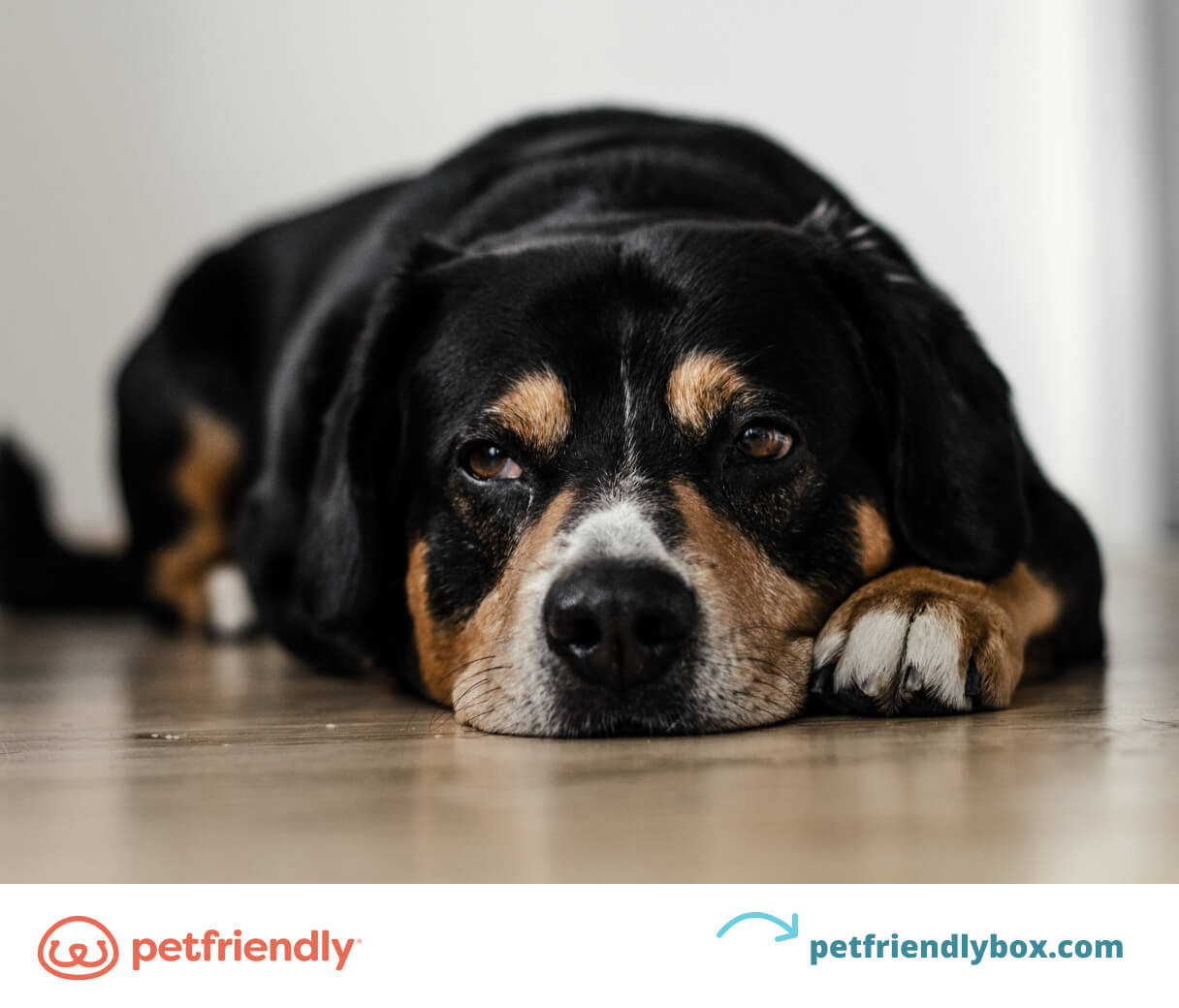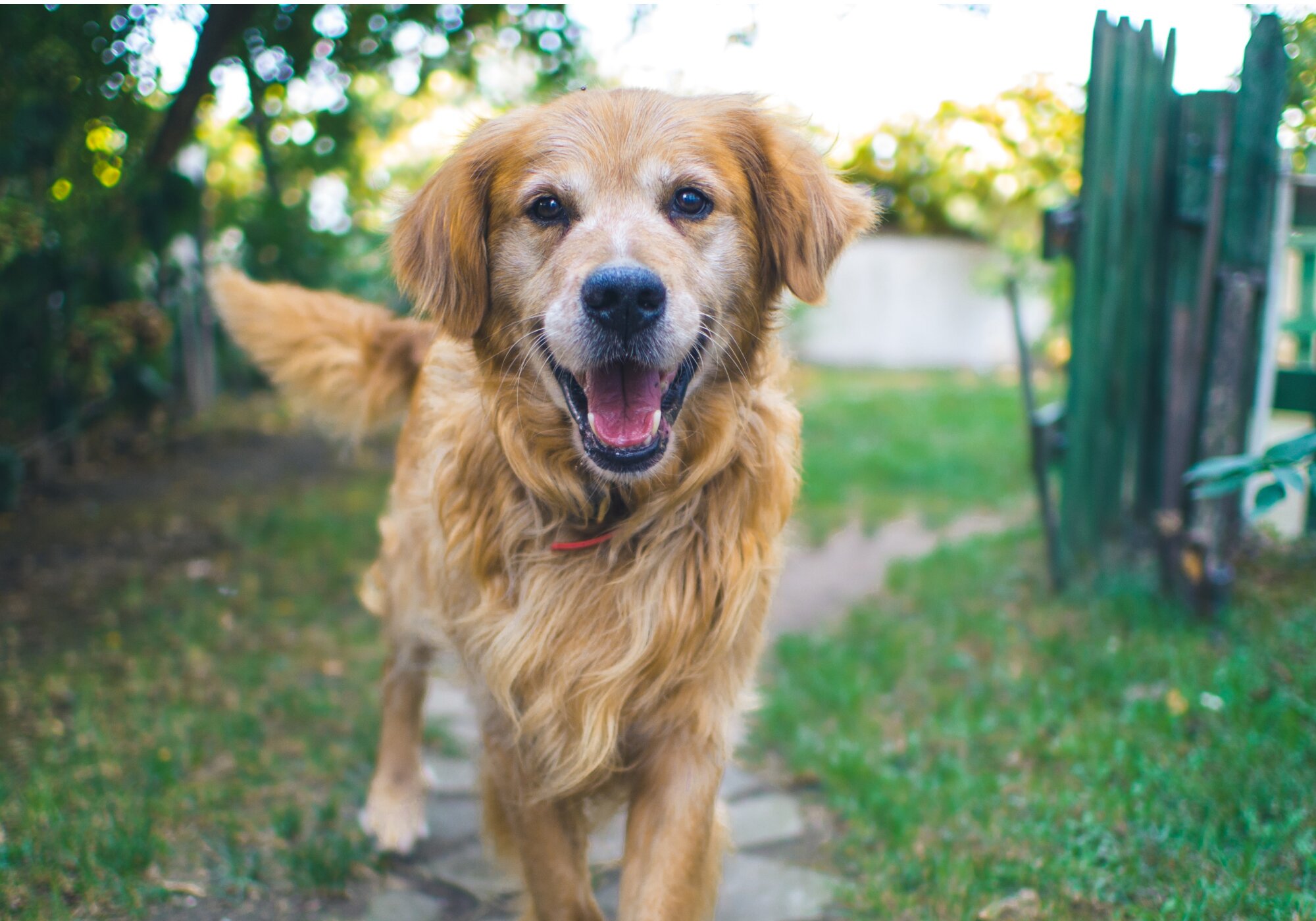Being a dog parent is awesome, especially when you get to exercise with your dog. Playing, taking long walks, and doing other activities are great for bonding with your pet. But, for some breeds, there are degenerative diseases that can restrict your pet’s ability to stay active.
One degenerative disease your dog may be susceptible to is hip dysplasia. Learning that your dog has hip dysplasia can be scary, but knowing the basics will help you find the best treatment to support your dog’s health and happiness.
In this article, we'll cover everything a dog owner needs to know about hip dysplasia, including:
- What is canine hip dysplasia
- What causes hip dysplasia in dogs
- 5 early signs of hip dysplasia
- How to prevent hip dysplasia in dogs

What is canine hip dysplasia

Canine hip dysplasia is the abnormal development and growth of a dog's hip joint. This creates a hip deformity in dogs that leads to hind-end pain, stiffness, and weakness.
To understand hip dysplasia’s effects, it’s important to know the anatomy of your dog’s hips. The structure of the canine hip is a ball and socket joint.
When a dog suffers from dysplasia, the ball and socket joint do not fit properly because of abnormal joint development. Because of this, both the ball and socket rub and grind against the head of the femur bone causing deterioration and the loss of joint function. Over time, this can inflict pain, weakness, and other serious symptoms.
Hip dysplasia in dogs most commonly occurs in large-breed dogs. Large breeds have a genetic predisposition to dysplasia. This means that their body type is more likely to develop hip dysplasia.
This is because large dog breeds can have excessive growth rate hormones which cause them to grow faster than other breeds. But, this joint disease can also affect smaller breeds and cats.
Some commonly affected breeds include:
- Golden Retrievers
- Great Danes
- Mastiffs
- German Shepherds
- Labradors
- Saint Bernards
- Rottweilers
- Newfoundlands
- Bulldogs
- Pugs
- Large mixed-breed dogs

What causes hip dysplasia in dogs

Hip dysplasia is a hereditary disease. But, there are other factors that can increase your dog's likelihood of developing dysplasia.
According to the AKC, the most common include:
- Quick, excessive growth
- Improper weight or muscle mass
- Poor or unbalanced nutrition
- Too much or too little exercise
- Osteoarthritis
Osteoarthritis
Osteoarthritis and hip dysplasia are not the same conditions. But, a combination of hip joint laxity (loose hip joint) and osteoarthritis can cause your dog to develop hip dysplasia.
Osteoarthritis, also known as degenerative joint disease, happens when the cartilage that protects your dog's joints starts to deteriorate. When this happens, the femoral head rubs against the pelvic bone and the entire joint becomes inflamed.
If your dog suffers from osteoarthritis, they may experience symptoms like:
- Pain
- Inflammation
- Lethargy
- Weight gain
- Decreased range of motion
- Bone spurs
VET TIP
To ensure you stay on top of any early signs of osteoarthritis, visit your veterinarian regularly. They can help diagnose osteoarthritis and ensure your dog maintains a healthy weight and active lifestyle.
5 early signs of hip dysplasia
This condition can start in dogs at a young age. However, most dogs do not develop clinical signs until they are fully developed adult dogs.
Hind-end joint pain, stiffness, and weakness are the main clinical signs of hip dysplasia in dogs. But to stay ahead of this condition, make sure you know these five early signs of hip dysplasia in dogs.
1. Weakness and pain in the hind legs.

Hip dysplasia damages the cartilage in your dog’s hip joints which can cause extreme pain for your dog. You’ll likely notice if your dog is in pain, but if you're unsure look for these signs or behaviors.
- Shaking
- Flattened ears
- Panting or crying
- Refusing play time or exercise
- Difficulty climbing stairs
- Lameness or limping
- Loss of appetite
2. Swaying or "bunny hopping."

“Bunny hopping” or swaying is a common hip dysplasia symptom that looks similar to how it sounds. In an effort to limit the amount of weight your dog puts on their hind legs, they will move their back legs at the same time.
Dogs with dysplasia might also sway while walking if they have a tighter hip or unsteadiness. To diagnose the root of your dog’s swaying or hopping, visit your vet to have them perform an examination.
3. Enlargement of the shoulder muscles.

In most cases of hip dysplasia, dogs experience immense pain when using their hips and hind legs. To avoid pain, many dogs overcompensate by using their shoulder muscles more than their hips and back legs. This can lead to enlarged muscle mass and inflammation in their shoulders.
Your dog's shoulders could also become enlarged due to an injury in your dog's shoulders. So, visit your veterinarian if you think your dog may be suffering from a shoulder injury. They may recommend physical therapy or pain medication to relieve your dog’s symptoms.
4. Lameness.

Dogs who suffer from hip dysplasia are actively experiencing an injury to their hip joint. The inflammation and scar tissue in their joints can cause symptoms of lameness.
Lameness is the inability to properly use one or more limbs. Lameness in your dog's hips is often associated with pain or injury of the hip joint and is a common sign of dysplasia.
Diagnosis usually starts with identifying symptoms. If your dog is experiencing lameness, they may present signs like:
- Refusing to put weight on their hind legs or limping
- Pain and general signs of discomfort
- Difficulty walking upstairs
- Loss of muscle mass in hind legs
- Unable to walk or run normally
- Drop in activity levels
To officially diagnose if dysplasia is the culprit of limping in your dog, visit your vet to perform an examination.
5. Decreased activity.

If your dog suffers from dysplasia, it may limit their ability to take part in activity and exercise. The combination of pain and weakness can lead to a decrease in physical activity in your pet.
Abrupt changes in your dog's activity could be a sign of a more serious condition. Talk to your vet if you notice a sudden decrease in activity levels in your pet.

Diagnosing hip dysplasia
Understanding the early signs and symptoms of hip dysplasia will put you on a quicker, easier plan of action for treatment. But, to establish if your dog has developed hip dysplasia, you will need to visit your veterinarian's office to receive a hip radiograph or x-ray.
One of the most common surgical procedures for dysplasia is a total hip replacement. Another option is a femoral head osteotomy, where the top of the femur is removed and scar tissue buildup creates a false joint.
To help you diagnose hip dysplasia be sure to check with your vet. They can help offer different procedures to treat their condition.
Common methods for treating hip dysplasia:
| Non-surgical | Surgical |
|---|---|
| Physical therapy | Steroid injections |
| Hip and joint supplements | Total hip replacement |
| Non-steroidal anti-inflammatory drugs (NSAIDs) | Triple pelvic osteotomy (for dogs younger than 10 months) |
| Acupuncture | Femoral head ostectomy (for mature dogs) |
| Steroid injections | Juvenile pubic symphysiodesis |
Every case of hip dysplasia looks different. If your dog suffers from extreme pain and serious symptoms from dysplasia, your veterinarian may suggest a surgical intervention to restore your dog's normal hip function.
But in some cases, your dog may not need to undergo surgical procedures to relieve their symptoms. Depending on your pet's clinical signs, a hip replacement may not be necessary to reestablish joint stability.
Medical management (like maintaining a minimal body weight) and hip and joint supplements are also helpful options for large and giant breeds that suffer from dysplasia.
How to prevent hip dysplasia in dogs

Not all cases of dysplasia are preventable. But, pet parents can take steps to reduce the risk of developing hip dysplasia.
Here are 4 ways to prevent hip dysplasia.
1. Research your dog's breed.
Every breed is unique, and there are some breeds that are more prone to hip dysplasia. Spend time doing a little research about your dog's breed so you can better understand and support the specific needs they may have.
While it doesn’t mean they will develop hip dysplasia, it’s important to know your pet’s genetic background so you can stay ahead of any potential issues.
2. Support your dog’s skeletal system.
The best way to support your dog's skeletal system (hips and joints) is by providing them with the right vitamins and minerals. Vitamin C, vitamin D, and phosphorus are important vitamins your dog needs to keep their bones strong. A daily multivitamin is also a great way to boost your dog’s immune system and overall joint health.
3. Feed your dog a healthy diet.
Maintaining a healthy weight is the best way to encourage normal joint development from a young age. Dogs should eat nutritionally balanced dog food, filled with the vitamins they need, all throughout their life.
Follow the instructions on the labels and consult with your vet to feed the right amount of food for young dogs to old dogs. Overfeeding can cause obesity in giant breed dogs, which can lead to other serious health issues.
4. Maintain a consistent exercise routine.
Every dog is different, so exercise may look different from one breed to the next. In general, high-energy breeds require more exercise than lower-energy breeds.
Dogs with hip dysplasia should have an appropriate exercise routine that will allow them to stay healthy without causing pain. Talk to your veterinarian to determine a healthy exercise plan for your pet.
Dogs with hip dysplasia can still live long, healthy lives (without a total hip replacement). If your dog is showing signs of hip laxity, weakness, and pain talk to your vet. They can help you treat hip dysplasia and make a long-term plan for your pet. 

